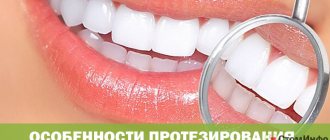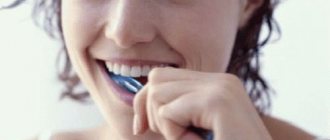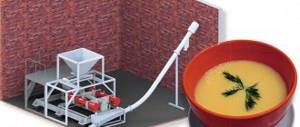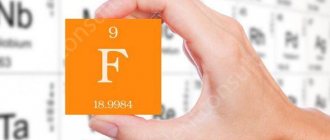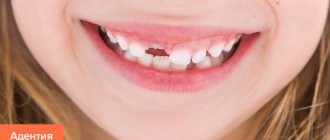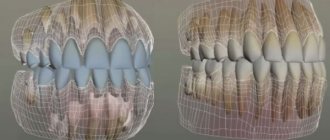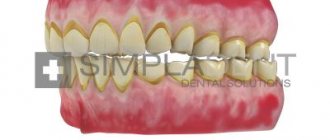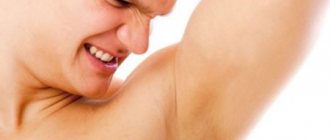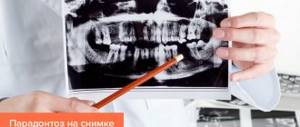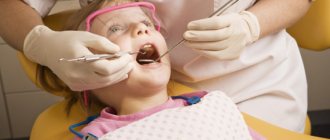4560
The “shark teeth” anomaly is not such a harmless joke of nature as it might seem.
It not only causes psychological and physical discomfort to a person, but can also lead to serious consequences for the dental system.
To get rid of it, you may need the help of not only a dental surgeon, but also an orthodontist.
Causes of the anomaly
Polyodontia is an anomaly in the number of elements of the dentition, characterized by the appearance of supernumerary units (the norm is 20 temporary and 32 permanent teeth).
Today, pathology is diagnosed very often. The exact nature of the disease is still unknown.
Initially, doctors assumed that the deviation from the norm could be associated with problems arising during the formation of teeth, that is, at the stage of formation of tooth germs, and they were partly right.
Modern medicine has addressed this problem more convincingly, and several years ago it put forward two main hypotheses that could become the main factors in the development of the anomaly:
- Shark teeth in humans are an atavism (the appearance in a given person of characteristics characteristic of distant ancestors).
Thanks to scientific research, it was possible to establish that initially a person should have been born with a large number of teeth, and the body often tries to restore this condition.It is also known that our ancestors had 6 incisors on both jaws. It follows that abnormal signs may be a legacy of anatomical features that have become obsolete in the distant past.
- Abnormal intrauterine development of the child. This version is the most justified from a scientific point of view.
Poor ecology, an abundance of little-known viruses, dependence of pregnant women on alcohol and drugs, as well as uncontrolled use of illegal medications lead to the splitting of tooth germs.But indeed, the pattern of the presence of anomalies in children born to mothers with bad habits is being noted more and more often.
In children aged 4-6 years, developmental defects can be caused by the following factors:
- genetic inheritance;
- rickets suffered by the baby;
- serious infectious diseases that the child suffered in infancy;
- the advantage of soft foods in the daily diet.
However, the listed explanations cannot be called fully proven factors, so scientists continue to carefully study the nature of the pathology.
Remarkable! The presence of additional wisdom teeth in adults is not an anomaly!
Experts interpret polyodontia as a problem associated with a large number of teeth. This means that the patient’s dentition may contain redundant elements that should not normally be present. Even one unit of supernumerary is considered a violation of the development process of the bone organs of the mouth.
Important! The anomaly is diagnosed with the same frequency in both children and adults. The only difference is that a child can have no more than 4 additional teeth, while an adult may have more of them; moreover, they can be located not only in the dentition, but also outside it.
Experts divide polyodontia into 2 types:
- False. Occurs against the background of a child’s temporary tooth that has not fallen out. The element is firmly fixed and can fully perform its functions for decades. In dentistry, there have been cases where milk units were found in 50-year-old patients.
- True. It is characterized by the pathological formation of supernumerary primordia. More often it develops against the background of a genetic predisposition or due to an unfavorable factor.
Depending on the location of the “extra” elements, pathology is divided into forms:
- Typical. Additional elements are located in the dentition.
- Atypical . Excess elements can erupt in any part of the oral cavity.
Important! All forms and varieties of anomalies require an individual approach to treatment.
The appearance of a person in the absence of upper incisors and methods for correcting the defect.
Read here about the essence of using the Kois deprogrammer.
At this address https://www.vash-dentist.ru/ortodontiya/prikus/analizator-hip-ploskosti.html we will tell you about the purpose of the hip plane analyzer.
Treatment
In each specific case, the dentist will individually decide what to do with shark teeth in a small patient - the main thing is to notice the problem in time and not let it get worse. Usually, no more than one or two or three shark teeth grow, and the child does not experience discomfort because of them.
In such a situation, doctors most often suggest not to force things and wait a while (about a couple of months) to allow the milk jugs to loosen and fall out on their own. Throughout this period, it will be necessary to regularly carry out professional sanitation and cleaning of the oral cavity, monitor the child’s oral hygiene and avoid an abundance of solid foods such as nuts, some sweets, crackers and other things.
If the problem has been going on for quite a long time, then the best solution would be to tear out the interfering milk jugs - there is no point in feeling sorry for them, since permanent ones are already ready to take their place. The same will have to be done if inflammation occurs in the area of conflict between the two rows, in order to prevent the development of more serious dental or gingival diseases.
This can become a serious stress for the baby, which parents and a professional dentist will help him cope with. In the future, permanent teeth, which are no longer in the way, should take their proper places within several weeks or months (up to six months), otherwise you will have to resort to using one of the following orthodontic appliances:
- braces;
- aligners;
- mouth guards;
- retainers.
Additional information : According to statistics, shark teeth are most often formed behind the incisors of the lower jaw or, slightly less often, the upper jaw (sometimes behind the molars).
Main features
The disease has severe symptoms. However, signs may differ between children and adults. Polyodontia in adults is manifested by the following symptoms:
- Excess teeth appear on the palate and gums. Their structure and shape are distorted.
- Occlusion disorders.
- Problems with pronunciation.
- Turning the teeth from the main set to the side.
- Too close placement of dental elements to each other.
- Difficulty in chewing food and, as a result, disruption of the gastrointestinal tract.
- Inflammation of mucous structures due to injury to them by “extra” elements.
Children may develop additional baby teeth in infancy or from the first day of life. The symptoms are as follows:
- disruption of the eating process - the child constantly bites the mother, which makes breastfeeding impossible;
- disruptions in the functioning of the digestive system;
- swelling of the nasal mucosa;
- increased salivation;
- negative changes in body temperature;
- swelling of the tissues surrounding the erupting tooth.
Remember! The child most acutely perceives not speech problems that arise as a result of the disease, but ridicule from peers, which becomes a consequence of serious mental disorders.
Closedness and reluctance to behave openly in the presence of strangers can result in the child developing a sense of inferiority. For this reason, the anomaly requires immediate elimination using an individual approach.
In what order do baby teeth fall out?
The replacement process itself has some nuances.
When falling out, symmetry is maintained. This means that paired teeth become loose at the same time.
There is no exact dropout pattern. Each child is individual.
Which baby teeth fall out first? Most often, the lower jaw is released first. The order of drops is approximately as follows:
- the first are the lower central incisors;
- the second – the central incisors of the top;
- third – lateral incisors of the top and bottom;
- fourth – first molars;
- fifth - fangs;
- sixth - second molars of the top and bottom.
The milk kit must be changed without fail. Although in some cases, of course, not in full force, it persists throughout life.
Concomitant pathologies
According to statistics, the anomaly often develops due to the strength of baby teeth, which grow crookedly and do not want to make room for permanent elements.
But, as a rule, over time the situation changes for the better, and new teeth find the right place in the row, displacing their milk predecessors. However, recently, clinical pictures characterized by the presence of complex anomalies in the development of oral organs have become increasingly common.
Let's consider predisposing factors:
- Overstaffing. The problem is the appearance of an excess number of teeth.
Most often, their number is higher than normal. This deviation is caused by genetics and in some cases is inherited. Doctors often noted the presence of an extra tooth in children whose medical history indicated that their grandparents had this pathology. Fortunately, modern dentistry successfully extracts such teeth. - Underdevelopment of the jaws. This condition is medically called micrognathia or microgenia.
In the first case, we are talking about the small size of the upper jaw, and in the second, underdevelopment is noted in the movable jaw. The anomaly develops for a number of reasons, among which experts include violations of the proper nutrition of the pregnant woman, disruptions in the metabolic processes of the fetus, early loss of a temporary set of teeth and a negative genetic factor.
The listed pathologies are considered the main ones, and in most cases they are the provocateurs of the formation of the second row of dental units.
What can be the risk of early change of milk kit?
If the child’s jaws began to loosen before the age of four, then we can talk about accelerating the process. The reasons here may be:
- root injury;
- formation of caries;
- deliberate rocking.
Representatives of the milk kit that fall out prematurely free up a lot of free space. As a result of this, those neighboring them take over this space, and during the period of molar eruption there is simply not enough space for it. The result is his incorrect growth.
To prevent such a defect, the baby needs to be shown to an orthodontist. Most often, the child is fitted with a special prosthesis that does not allow neighboring teeth to move from their bed.
Therapeutic measures
In order to prevent the development of a shark jaw in time and not to miss the stages of the formation of “extra” units, it is necessary to constantly monitor the condition of the dental system during the period of changing the milk set to a permanent one.
The child may complain of pain in the mouth and discomfort when biting into hard foods. It is important not to ignore these seemingly harmless signs.
It is necessary to evaluate the baby’s smile - if by the age of 5 years sufficiently wide gaps have not formed between his front teeth, this may threaten a further narrowing of the dentition. This phenomenon almost always entails the appearance of supernumerary units or contributes to the curvature of the indigenous organs.
The anomaly is treated in various ways. The technique is determined taking into account concomitant pathologies and the complexity of a particular case.
First of all, the doctor assesses the location of problematic baby teeth and removes them. This will allow timely normalization of the development of indigenous elements. As a rule, after such manipulations the problem is eliminated.
Further, during the life of the child, the dentition self-regulates to a normal state. This occurs under the influence of the lips and tongue, which, in constant contact with the crooked row, force the teeth into the optimal position.
If self-regulation is impossible, and the pathology has reached the stage of active development, doctors recommend orthodontic treatment , which consists of wearing braces or mouth guards. The design will have an impact on the teeth for a long time, gradually shifting them to the optimal position.
As for preventive measures, they do not exist, especially if you had to deal with an unfavorable genetic predisposition.
There are no preventative procedures that would 100% protect a person from developing a shark jaw. However, doctors give some recommendations, compliance with which will reduce the risk of anomaly:
- the child should regularly eat solid foods, which will help the milk elements fall out in a timely manner;
- Problems that arise in the baby’s oral cavity must be eliminated at the stage of their early development.
We will consider medical recommendations in more detail at the end of the article.
Despite the fact that shark teeth are rare, in 80% of cases this pathology is harmless and can be easily corrected. The main thing is to notice the problem in time and hurry to eliminate it.
When does milk loss begin in children?
At what age does loosening begin? There is no exact time, since the beginning of the process depends on the physiology of the baby.
The average age when a child begins to change teeth is five to six years. In some cases, the process may be slightly ahead of schedule or slightly behind. This is a physiological norm, but if loosening began much earlier, then the child should be shown to the dentist.
Dr. E. O. Komarovsky believes that a slight delay in the loss of breast milk is not a pathology. And if the baby lost his first tooth at 4.5 years old, then there is no reason for any concern.
The importance of proper breathing
When the natural process of breathing through the nose is disrupted, the child’s maxillofacial apparatus begins to develop incorrectly, which provokes the appearance of a second row of teeth.
The fact is that molars are larger in size compared to molars, and therefore they need more space to erupt.
To ensure that the stage of their appearance on the gum surface is not interrupted, it is important that the jaw structure is correctly formed. If this process is disrupted, unexpected problems can be expected.
The jaw arch expands at the age of 5-10 years, so you need to monitor the timely appearance of physiological gaps between dental units.
At the stages of formation, an important role is assigned to language. It applies optimal pressure on both jaws. If a child is susceptible to frequent colds, nasal breathing becomes difficult and he begins to breathe through the mouth.
In such a situation, the correct position of the tongue changes - it sinks deeper into the oral cavity, losing contact with the dentition. In this case, permanent teeth can erupt anywhere, violating the line of the correct dental arch.
Indications for tooth extraction and modern methods used.
In this publication we will talk about the features of distalization of maxillary molars.
Follow the link https://www.vash-dentist.ru/ortodontiya/prikus/mehanizm-stanovleniya-molochnogo.html if you are interested in the stages of the formation of primary occlusion in children.
Recommendations for parents
When the baby tooth is already loose and the permanent tooth is growing right under it, give the child more solid food (apples, carrots, nuts, pears). Thus, the loosening will go faster and the change will occur naturally. If the delay is observed from year to year, check the child for sufficient micro- and macroelements in the body. Sometimes the cause of the problem lies in the rare disease rickets, which occurs when there is a lack of calcium and vitamin D.
If the teeth have not fallen out after the baby is 9 years old, it is worth checking the child for the presence of molars. Again, due to genetic failures, it may happen that the permanent teeth have not yet fully formed, so the body does not allow the baby teeth to fall out.
As you can see, in most cases, nothing drastic needs to be done if the baby still has a baby tooth, and a new molar is growing under it. The main thing is to monitor the development of the situation in order to take the necessary measures in time. Try to interfere minimally with the natural process. Mechanical removal should be done only if there are clear indications and only in a doctor’s office.
There is no need to pull out teeth yourself; you can damage the tissue and cause an infection that is dangerous to the baby’s health.
Parents should also remember that they should visit the dentist every two years, regardless of the condition of the oral cavity. You need to start doing preventive examinations when the baby’s first teething begins, that is, from the first year. In this case, you will clearly understand how your child is developing.
lechimdetok.ru
Possible consequences
It sometimes takes doctors a lot of time to eliminate the consequences of polyodontia. Incorrect or untimely treatment can lead to the following problems:
- malocclusion;
- development of speech defects;
- inflammatory processes in soft tissues;
- osteomyelitis of the jaw bones in chronic form;
- destruction of the rudiments;
- incorrect eruption of radical units;
- harm caused to a person’s mental health due to the appearance of an aesthetic defect.
If you start the pathology and allow it to develop until the bite is fully formed, the treatment will become much more complicated.
In order to determine the topography of the anomaly with maximum accuracy, doctors prescribe a number of diagnostic measures to adult patients. The process of removing false teeth also becomes more complicated, which takes place under local anesthesia, and in some cases requires general anesthesia.
The stages are as follows:
- peeling of the mucous membrane;
- opening of bone tissue;
- tooth extraction;
- removal of bone defects using osteoplastic material;
- suturing the mucosa.
As it became clear, timely removal of supernumerary elements at an early age does not present any difficulty. However, the process of removing impacted shark teeth requires strict adherence by the specialist to a certain procedure.
After such an intervention, the patient will have to scrupulously follow the rules of hygiene, change his diet, take a course of antibiotics prescribed by the doctor and, possibly, continue treatment with orthodontic structures.
Summary
The tooth replacement period is a very important time for a child. The gums are very vulnerable at this time. Any injury received by the baby can negatively affect the eruption of the molar set.
- During tooth loss, in addition to brushing your teeth, you should also use special rinses. Additionally, you need to clean your mouth after every meal.
- Chewing gum is not recommended for children.
- It is necessary to treat caries even in baby teeth, since the infection can spread to permanent teeth.
During the period of replacement of baby teeth, it is necessary to reconsider the child’s diet. The menu should include foods containing calcium, vitamins and minerals. Only in this case will the enamel of the primary set be strong and healthy.
lecheniedetok.ru
Preventive measures
Dentists have compiled a memo for parents aimed at preventing the development of anomalies of the maxillofacial apparatus in children:
- teach your baby to breathe only through his nose;
- eradicate the child’s habit of putting various objects into his mouth and sucking his finger;
- daily monitor the condition of gum tissue, dental units, mucous membranes and the development of carious processes;
- make adjustments to your child’s diet, which will help develop optimal chewing reflexes;
- prohibit touching the growing tooth with your tongue or fingers;
- Visit a pediatric dentist for follow-up examinations at least once every 3 months.
If the following situations occur, immediate medical attention is required:
- if a permanent tooth has erupted, but its milk predecessor does not think of falling out for 3 months or more;
- if the “milk jug” is unsteady, but the prolapse does not occur , and the baby experiences discomfort;
- when the slightest pain or suspicion of inflammatory processes occurs.
In the video, the doctor explains what needs to be done when permanent teeth grow in the second row.
What should parents do?
Despite their frightening appearance, shark teeth very rarely lead to serious problems. Experts usually advise parents to wait until the baby tooth, which forms the second row of teeth, falls out on its own.
If this process is delayed, an orthodontist or dentist may recommend removal of a temporary tooth as an unnecessary vestige. After this, after some time (several months or weeks), the permanent tooth occupies the desired hole and is fixed in it.
In what cases should you contact a dentist:
- if, 3 months after the appearance of a permanent tooth, the baby tooth still has not fallen out;
- if a non-permanent tooth is quite loose, but does not fall out on its own, causing pain and anxiety to the baby, or even loss of appetite;
- if the temporary tooth begins to become inflamed, which can be judged by pain, discoloration, and “spotting” of the enamel;
- Be sure to read: vitamins for strengthening gums and teeth growth
You should not delay the process of seeing a doctor if the process of changing teeth is associated with pain and suffering for the child. How can you help your child if the temporary tooth has not yet fallen out when the permanent one has already begun to grow, which leads to gum pain?
lecheniedetej.ru
Reviews
Various dental anomalies have a negative impact on the beauty of a smile.
Defects create obstacles to communication and provoke a person to develop a subjective and distorted opinion about his appearance, as a result of which he begins to experience deep emotional stress.
Shark teeth, malocclusion, and diction problems can also lead to such consequences.
If you have already encountered such a problem, and after reading the article you would like to share with readers an effective way to eliminate the anomaly, leave your feedback in the comments below.
If you find an error, please select a piece of text and press Ctrl+Enter.
Tags: bite correction
Did you like the article? stay tuned
Previous article
When subperiosteal implants are the only option to restore the integrity of the dentition
Next article
Technology of restoration of teeth in the frontal zone with glass-ceramic crowns
Gill arches in a shark's jaw
Without gills, a shark cannot breathe. They are the main reason why oxygen gets inside the shark's lungs. The shark periodically draws water into its slightly open jaws. From here it goes to the gills, and oxygen begins to enter the shark’s lungs. That is why the shark’s jaw is always slightly open, so that if necessary, it can quickly enrich its body with oxygen. And the arrangement of the teeth in the jaw helps it do this as efficiently as possible.
The gills are connected to each other by the attachment of cartilaginous copulas. They are partially fused with each other. Why are gills arranged this way? There is a reason for this.
Before we find out, let’s add one more important fact. The gills of a shark have small processes that are thin and resemble stamens. They are placed so as to be at the same level with each other. For what?
Due to their location, the stamens in the shark's gills, which are attached through cartilage to the jaw, prevent large volumes of food from falling out through the gills. Because of this, the shark can hunt less and immediately digest more food than if some of it fell back into the water through the gills. Thus, we can conclude that gills not only help the shark breathe, but also help save the shark’s energy and time.
Shark gills in shark jaw
